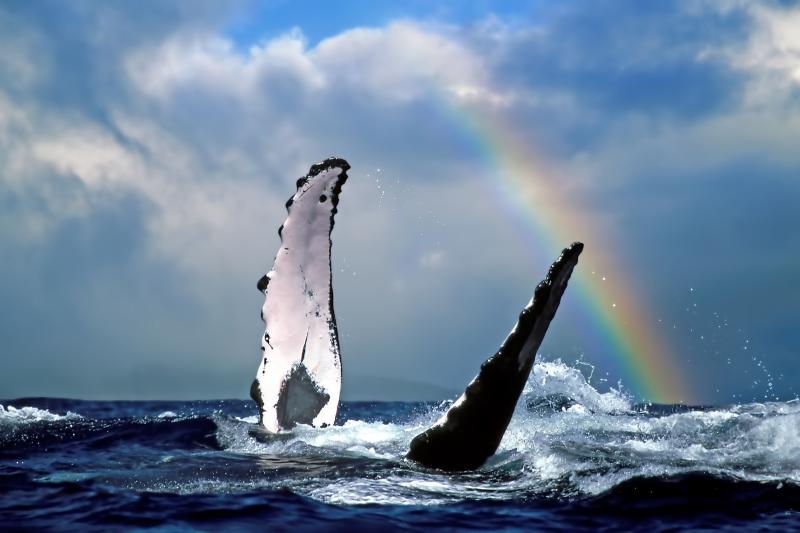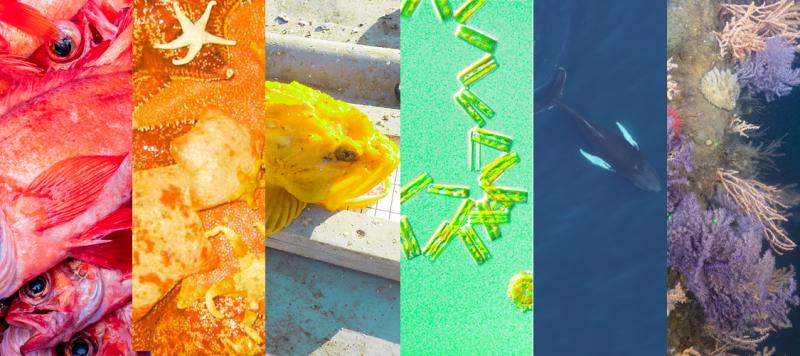NOAA Fisheries is proud to join the nation in recognizing Lesbian, Gay, Bisexual, Transgender and Queer+ (LGBTQ+) Pride Month to commemorate the many contributions of LGBTQ+ colleagues. This celebration throughout June is held to increase the awareness of LGBTQ+ history and contributions of individuals who are a part of this community.
Explore the features below to learn more about a new employee resource group created to provide a safe space for all. Get a closer look at the work of staff members throughout the country who help achieve our mission of ensuring sustainable fisheries and conserving marine species for future generations.
Features
Celebrating Pride Month with Safe Space and Community
The Northeast Fisheries Science Center's new LGBTQ+ Employee Resource Group provides a safe, welcoming, and affirming space for LGBTQ+ and their allies. Group co-chairs talk about the importance of this group, goals, activities, future plans, and more!
New LGBTQ+ Employee Resource Group
Joseph (Joey) Bennington-Castro, Science Writer
Joey Bennington-Castro is the senior science writer at the NOAA Fisheries Pacific Islands Regional Office. In this role, he shares stories about NOAA Fisheries' conservation and management activities in many different formats. He grew up in Waiʻanae, an underserved community on Oʻahu, Hawaiʻi, and attended the University of Hawaiʻi at Mānoa to study physics and astronomy in hopes of one day specializing in extrasolar planets.
Upon earning his B.S. in physics and completing a couple of astronomy research projects, he realized that the life of a scientist (or at least that of an astronomer) wasn’t for him. What he really enjoyed was sharing and talking with people about science—this passion, along with his longtime love of writing, led him to the field of science journalism.
Learn more about Joey Bennington-Castro and his work
Réka Domokos, Research Oceanographer
As a part of the Ecosystem Sciences Division at the Pacific Islands Fisheries Science Center, Réka works in the Pelagic Research Program, tackling a lot of questions in the pelagic realm. Part of her work is with the Bigeye Initiative, which focuses on learning all we can about bigeye tuna so that we can predict how the environment affects bigeye tuna and how the fishery will do in the future with natural variability and climate change. This species is the most economically important commercial fish for the deep-set longline fishery here in Hawai‘i. She grew up in Budapest, Hungary where she used to work as a professional photographer and videographer.
After coming to the United States, she focused on her interest in ethology (the study of animal behavior) and the ocean. She decided to go back to school, earning her undergraduate degree in coral reef fish behavior at UC Berkeley and then attending the University of Hawai‘i at Mānoa for her graduate work. She received a master’s in marine biology, focusing on coral reef fish behavior. Réka realized she drawn to physics and math and earned a second master’s degree in physical oceanography, then a Ph.D.
Learn more about Réka Domokos and her work
Trevor Spradlin, Marine Mammal Biologist
Trevor Spradlin is a marine mammal biologist and has been at NOAA Fisheries for 26 years. He is currently the Deputy Chief for the Marine Mammal and Sea Turtle Conservation Division in the Office of Protected Resources. Trevor works with a team on a suite of conservation issues for whales, dolphins, porpoises, seals, sea lions, and sea turtles. He helps supervise the scientists and managers in the Marine Mammal Health and Stranding Response Program which coordinates and oversees the agency’s nationwide emergency response efforts to rescue marine mammals in distress, and investigates the health trends of marine mammal populations.
Born and raised in Washington, D.C., Trevor received his undergraduate degree from Boston University where he majored in Biology with a specialization in Marine Science and minored in Italian Studies. After working for several years in NOAA Fisheries’ Office of Protected Resources, he pursued a master’s degree at the University of St. Andrews in Scotland at their Sea Mammal Research Unit. This experience enabled him to learn about marine mammal science, conservation, and legislation from a diverse and international perspective.







